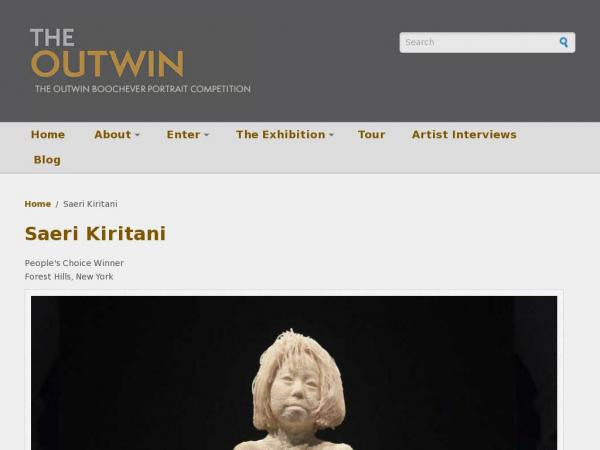Anne Leflot
French Literature teacher, Theory of Knowledge teacher, French department coordinator
Washington International School
High School (16 to 18 years old), Adults
Teacher/Educator
Language Arts And English, World Languages, Other
: Theory of Knowledge
I am French literature teacher and Theory of Knowledge at Washington International School in Washington, DC, where I also coordinate the French department. As a French native, I have been teaching literature in both public and private schools in France and the United States. In my daily practice at WIS, I use Project Zero ideas to develop my students’ global competence and cultural understanding through the use of Thinking Routines, museum exploration and making.
Anne Leflot's collections
Haiku - connection between Text and Art
<p>Using Project Zero Design Thinking "Making Moves" [ressource 4], this activity explores multiple haikus from the Edo period in Japan. Through an analysis of these haikus, students will gain an understanding of: the different topics explored in haikus, their structure and, how text and image are intertwined. This will lead the students to create their own illustration of haikus from the Edo period. </p>
<p><strong>Step 1: Notice everything</strong><br /></p>
<p>Have students silently notice every details on the four works of art [ressources 1-3] and take notes - they don't have access to the captions nor the descriptions.</p>“Notice everything” is a learning move that supports design sensitivity; refer to “Making Moves” [resource 4] for more information.<br /><p><strong>Step 2: Juxtapose</strong></p>
<p>Have student compare and contrast the works of art with one another and draw conclusion on recurrent patterns, topics, questions they want to further explore.</p>
<p><strong>Step 3: Zoom in on <em>Seated Monk</em> </strong></p>
<p>Have the students discover the meaning of the text (Japanese and English version) and its structure 5/7/5. [Ressource 5]</p>
<p><strong>Step 4: Envision and Hack </strong></p>
<p>- First, have the students illustrate one of the four haikus of their choice and explain their design in a Pair and Share activity. You will find in Ressource 6 (haiku.pdf) four different haikus for this activity. Ressources 7 and 8 are examples of student work.</p>
<p>- Then, have the students create their own haiku based on the illustrations of the 2 other works of art (Ressources 2 and 3 - Bats in moonlight and The actors Nakamura Utaemon III as Konobei and Nakamura Matsue III as Shiokumi Kofuji). Once they have finished, have them compare their text with the original haiku.</p>
<p><strong>Step 5: I used to think... now I think...</strong></p>
<p>To wrap-up the lesson, students go back to their initial thoughts about Haikus, text and image and, reflect on what they have learned. </p>
 Anne Leflot
Anne Leflot
9
Exploring identity - Japan and the Western culture
<p><strong>Using "See, Think, Wonder" and "Parts, Perspective, me", this collection explores how cultural shock influences the way artists see themselves or are perceived by others. The careful analysis of <em>100 Pounds of Rice</em> by the artist Saeri Kiritani provides an opportunity for students to reflect on the similarities and differences with the novel <em>Fear and Trembling</em> by the Belgian author Amelie Nothomb. It also invites students to reflect on their own cultural identity.</strong></p><p>Time- 1 or 2 class periods with optional homework and extension activities</p><p><strong>Guiding Questions:</strong><br /></p>
<ul><li>How do art and literature shape our understanding of cultures?</li><li>What kind of knowledge about a literary text and about art do we gain when we compare and contrast them?</li><li>How does language in art and literature represent cultural distinctions and identities?</li></ul><p>Context:<br /></p>
<p>In <em>Fear and trembling</em>, Amélie, who is the main character of this autobiographical novel, shares her struggles as a foreign employee in a big Japanese corporation where she is confronted with Japanese protocols and habits that are culturally new to her. In her story, Japanese culture is exposed through a foreign perspective. The aim of the collection is to bring a different perspective to our study, these of a Japanese women living in the US, in order to build a better intercultural understanding of the Japanese culture.</p>
<p><strong>Prior knowledge:</strong><br /></p>
<p>Students have read the novel <em>Fear and Trembling </em>and analysed the way Western and Japanese cultures are perceived by the different characters. They have explored how the autobiographical novel offers insights on the Japanese workplace culture and reflected on its limitations (a single story embedded in fiction). This teaching unit can be done without the comparative component of literature. It can also be adapted to any other literary work that explores the topic of identity. </p>
<p>Day 1:</p>
<p>Step 1: Have them do "See, Think, Wonder"individually with <em>100 Pounds of Rice</em> by Saeri Kiritani. Do not show the caption to students yet. The "See, Think, Wonder" routine is good to help students pay attention to details and unveil the artist's choices. It also encourages them to initiate a first interpretation.</p>
<p>Step 2: Debrief as a whole group- Discuss the self portrait of Saeri Kiritani. </p>
<p>Step 3: Show the Saeri Kiritani 's youtube video</p>
<p>Once students have discussed the sculpture, show them the video and ask them to take notes on the new information the artist provides.</p>
<p>Next, go back and look at the sculpture and see how their understanding has shifted from their initial interpretation.</p>
<p>Step 4: Read the caption</p>
<p>Have students read the caption and answer the questions of the Design Thinking routine "Parts, Perspectives, Me". The routine encourages students to consider the various viewpoints of an object, its users, and stakeholders, and reflect on their own connections and involvement with it. It helps them connect with the perspectives taken in the novel as they are complementary, yet different. It also lead them to reflect on their own identity and prepares them for possible extensions to the activity. </p>
<p>Step 5: Debrief the questions as a group</p>
<p>Day 2 or Homework</p>
<p>Step 6: Have them write an individual synthesis:</p>
<ul><li>What did I learn about Saeri Kiritani self-portrait? Fear and trembling? Me?</li><li>How do Saeri Kiritani and Amelie Nothomb express how they experience cultural differences?</li><li>What are the similarity and differences between them? How does it impact your understanding?</li></ul><p>Step 7: Debrief in pair or small group, then as a whole group</p>
<p><strong>Extensions</strong></p>
<p>Creative project: </p>
<p>Step 1 - Once they have completed these activities, ask them:</p>
<ul><li>What material or fabric would better represent who you are? Why?</li><li>What part of you would better represent who you are? Why?</li></ul><p>Step 2 - Debrief in group - reflect on the idea of cultural stereotypes: what role do cultural stereotypes play in the construction of self-identity? To what extent do cultural stereotypes limit or facilitate self-identification? Identification of others?</p>
<p>Step 3 - Have them sculpt their self-representation with the material of their choice.</p>
<p>Step 4 - Exhibition and presentation of the creative process.</p>
<p><br /></p>
<p><br /></p>
<p><br /></p>
<p><span class="Apple-tab-span"> </span><span class="Apple-tab-span"> </span><span class="Apple-tab-span"> </span><span class="Apple-tab-span"> </span></p>
 Anne Leflot
Anne Leflot
7
The nature of Japanese Ceramic
<p><strong>Description:</strong><br /></p>
<p>This collection, based of the exhibition "Imperfectly Beautiful: Inventing Japanese Ceramic Style" is integrated in a unit on Francis Ponge’s collection of poems called <em>The nature of things, </em>1942, France. In his poems, Ponge has a unique way of focusing on everyday life objects and symbols that he describes in very tiny details. The goal is to explore how Ponge’s perception of objects and symbols can be used as an entry point for an exploration of key components of other cultures. This collection is an opportunity for the students to understand how micro perspectives can lead to global and intercultural understanding.<br /></p>
<p>The collection represents tea pots used for the Japanese tea ceremony (chanoyu). Through slow looking techniques, students explore them and write poems using the thinking routine "Creative Comparison".</p>
<p><strong>Step 1: choose one of the tea pot and sketch it</strong></p>
<p><strong>Step 2: Pair and Share</strong> - Explain your choice. What did you notice? what do you notice in your classmate's choice/object?</p>
<p><strong>Step 3: Creative Comparison</strong></p>
<p>The thinking routine " Creative comparison" encourages metaphorical thinking – central to the work of any artist and to creative thinking in any discipline. Metaphors provoke our imaginations to create comparisons between dissimilar things, often leading to deeper and richer understanding of each." (PZ)</p>
<p><strong>Step 4: Pair and Share </strong>(with someone else) - Explain your choice. What did you notice? what do you notice in your classmate's choice/object?</p>
<p><strong>Step 5 : read the description of the exhibition and the caption. Answer the questions:</strong> </p>
<ul><li>In what way this new information influences your interpretation? </li><li>What does it confirm? What new ideas do you have? </li><li>What could you do to integrate them in your poem?</li></ul><p><strong>Step 6 : write a poem, using Francis Ponge's approach to objects.</strong></p>
<p><strong>Possible extension:</strong></p>
<p>Ask the students to reflect on ways to curate their poems, using the thinking routine "Layers".</p>
<p>For instance, my students decided to do a a pop-up exhibition. They turned their poems into bilingual bookmarks for the school fair. It was a good opportunity for us to talk about translation.</p>
<p><br /></p>
 Anne Leflot
Anne Leflot
36


